Einkorn: The Staff Of Life That Wheat Once Was
What started people eating foods that are now considered traditional? People must have had rational reasons for picking one food over another and, it would seem that those that have survived to become our staples were very sound choices. It is most interesting that of all the plants growing, humans chose their staple food from the cultivation of grasses. Obviously, the methodology behind their choices saw more than just “grass” in what would eventually be wheat. The fact that we are still eating wheat, many thousands of years later is testimony to the soundness of their judgment. Crucial choices like these are not haphazard so, what criteria would have inspired them?
We have to remember that our modern day literalism in how we see life is only about 2 to 3 hundred years old; it’s still the “new way” of seeing things, that we are not entirely use to. Before then, a more spiritual view predominated. People saw life and living things as the embodiment of spiritual qualities; their  appearance serving only as analog; to contained etheric qualities. Seeing unattended, yet thriving fields of grasses, growing virtually everywhere, those of the past saw that these grasses presented a potentially resilient, easily grown and abundant crop. Furthermore, from their use of analogy, it was clear to them that as all seeds posses the potential for infinite generations within them – these grasses presented a fertile energy captured within a food.
appearance serving only as analog; to contained etheric qualities. Seeing unattended, yet thriving fields of grasses, growing virtually everywhere, those of the past saw that these grasses presented a potentially resilient, easily grown and abundant crop. Furthermore, from their use of analogy, it was clear to them that as all seeds posses the potential for infinite generations within them – these grasses presented a fertile energy captured within a food.
The combination of resilience, abundance and infinitely perpetuating fertile power in the seeds of these grasses made them an ideal food that when eaten would impart the strength of their resilience in great abundance by being regenerative to the flesh from their fertility. Ethnobotanists still find this type of methodology surviving in rural China, India and in parts of the world where indigenous people still live off the land. If we examine the traditional foods of any culture, they will all have similar allegorical reasons for having been chosen as foods.
Wheat is of Eastern Mediterranean origins, we read everywhere that wheat had been a domesticated crop since about 8000 to 9600 BCE in the “fertile crescent area,” spreading to Europe and England in about 3000 BCE and to China about a millennium later. Some estimates suggest that it may have started even earlier.
From simple cross pollination, the best qualities of these grasses were hybridized to adapt to human needs. For thousands of years people were very content with what they had in wheat. It was not until modern times that wheat was found to naturally be high in protein, B complex vitamins, vitamin E, omega-3 and omega-6 fatty acids and minerals including calcium and iron. It would seem that the criteria that had made wheat a staple did indeed make it a very good choice, even in the absence of our modern sciences.
Why Fix What Is Not Broken
All wheat has the general botanical name; Triticum. Although moderately hybridized to adapt to various climates and good yield points, several wheat species had made it into the 19th century relatively unchanged. Farmed using practices that up to that point had remained completely “organic,” wheat’s nutritional density had been well preserved, adding to its already great value. At that time there were still many varieties of wheat, plus those from the main species adapted to soils and climate. Today, 90% of global wheat production comes from only a few. Among these are:
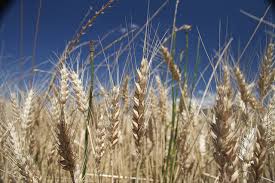
- Common wheat – Triticum aestivum, is the most widely grown wheat type, used mainly for the baking of bread.
- Durum or hard wheat is also known as “macaroni wheat” because of its common use in the making of Italian style pasta.
- Red Fife, a variety from Ontario, Canada in the 1860‘s, to suit the cold Canadian climate.
- Hard summer and winter wheats, are used for hard baking such as bread baking.
- Soft Wheats for soft baked goods like pastries and cakes.
These generally represent pre-1950 wheat varieties, typically regarded as heritage varieties, they are blended to suit everything from baking to brewing.
- Regarded as among the modern more hybridized wheat types, Norin 10 is a dwarf, high yielding, high gluten variety of common wheat developed in the 1960’s.
Thankfully, there are also ancient wheat types that have been left unchanged from what they once were and 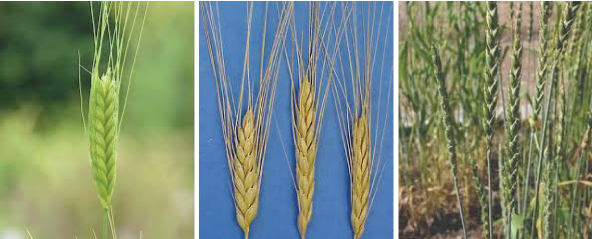 regarded as much healthier because of it. These are:
regarded as much healthier because of it. These are:
- Einkorn, the “mother wheat,” is the simplest unmodified wheat type
- Emmer, although ancient, it is a different hybridized species, out of which came Durum or hard wheat.
- Spelt; a more complex derivative of Emmer, a subspecies of common wheat.
The genealogy of Einkorn and Emmer is straightforward, with that of all other wheat types, including spelt harder to determine. Cultivated to a still limited but, much larger extent in Europe, the near East and North Africa,Einkorn and Emmer are grown on a very small scale in North America.
Huge production volumes of wheat present enormous profitability to both large agribusiness and commodities trading. Conventional food production involves logistics, practices and processes that center on maximizing yield, preserving that yield and then, squeezing every last bit of profit out of it. This ruthless, profit driven efficiency has done great damaged to wheat from a strictly “food” point of view. It would seem that as long as wheat is not being rendered immediately lethal through questionable processing practices, relatively few question it.
Rather than simply keeping soils fertile and growing the appropriate crop to best suit the microclimate of where it is being grown, agribusiness aggressively hybridizes or otherwise modifies crops, uses artificial fertilizers, pesticides, herbicides and chemicals to ensure maximum yields, consistently jeopardizing wheat’s natural nutrient density.
The logistics of processing large volumes of wheat are complex. Conventional wheat, even before it is planted gets treated with insecticides, herbicides, fungicides and hormones! After being harvested it needs to be dried before being stored or it creates mold and fungus. If it is dried at too high a heat, nutritive value is destroyed. In the storage of massive volumes of wheat, so called “protectants” (insecticides) are sprayed into the storage bins prior to and during filling. Once filled these are subject to further fumigation should any sign of insect life still be found. Typically potential carcinogens like methyl bromide and methyl phosphine are used.[1] This is done before wheat has even been processed.
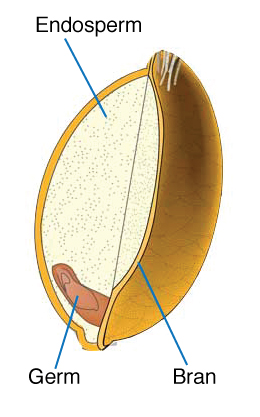 Wheat consists of:
Wheat consists of:
- bran – the husk,
- germ – where most of the oils are, and the
- endosperm – the starchier part of the wheat.
Although it is still done on a small scale, it has remained standard practice to mill wheat kernels whole, bran, germ and endosperm altogether using the slower heavy mill stones into “whole wheat flour” without any further processing. Because all oils are prone to rancidity, the only way to keep milled whole wheat from spoiling was to either mill it fresh as needed or, refrigerating it once milled. There was a time, not that long ago, when people would grow or buy wheat kernels, bring them to the local mill to be ground into flour as needed. Those days are long gone.
 Modern milling methods started towards the end of the 19th century. Using high speed milling machines, grains get heated to about 400 degrees Fo, casting off both germ and bran to be sold as animal feed. This certainly did prevent spoilage from rancidity, but it also took away vitamin E from the diets of the general population. These processes also produced the first “white flour” and with it, the baking of cakes, biscuits and white bread; foods that had never existed before. With these changes and the addition of sugars, Dr. Weston A. Price, a prominent health expert in his day, observed that general health started declining as tooth decay was on the rise, coinciding with these changes.[2]
Modern milling methods started towards the end of the 19th century. Using high speed milling machines, grains get heated to about 400 degrees Fo, casting off both germ and bran to be sold as animal feed. This certainly did prevent spoilage from rancidity, but it also took away vitamin E from the diets of the general population. These processes also produced the first “white flour” and with it, the baking of cakes, biscuits and white bread; foods that had never existed before. With these changes and the addition of sugars, Dr. Weston A. Price, a prominent health expert in his day, observed that general health started declining as tooth decay was on the rise, coinciding with these changes.[2]
Wheat is not only regarded as a staple food commodity in itself, but it is now also a resource to mine other valuable commodities out of. It is now standard practice to strip 11 main nutrients out of wheat, to then add back 5 nutrients (riboflavin, thiamine, folic acid, niacin, iron, and sometimes calcium), to make this now inferior, so-called “enriched flour,” the technical equivalent of “wheat flour.” What is left is more a leftover by-product than actual wheat.
Why is this done? Because the B and E vitamins, wheat germ oil and other separately extracted ingredients are worth more separately, than wheat whole. These are then sold to the cosmetics, pharmaceutical and neutraceutical industries. As if all this weren’t bad enough; after milling, to make wheat look snow white, it is bleached using peroxides, bromates or chlorine; a practice not permitted in the European Union.[3]
As preserving the value of the commodity has trumped its worth as an edible food and the health of those eating it, more recently, irradiation has become part of standard operating procedure for the processing of conventional wheat. All of this happens before an arsenal of still more chemicals get added to wheat doughs to “condition” and “fluff them up” before they are baked. To confirm this, simply read the ingredients label of most conventionally baked bread.
Naturally, you would expect that doing all this to a staple food will have effects on both food and those eating it. It has been noted by researchers that the removal of these key nutrients has altered how wheat digests. Rather than being absorbed evenly and gradually, wheat breaks down more quickly, raising blood sugar. To stabilize this spike in blood sugar, the liver metabolizes it by storing it as fat.
Similarly, gluten intolerance is now part of our vocabulary. Gluten in wheat has been part of baking for millennia and has never before been noted as having been problematic. So, what gives? Having been a recognized health issue only in the past few decades, gluten intolerance is definitely something new. It would seem that in the past few decades something has changed either in the physiology of those afflicted or, in the wheat itself.
Some blame the high yielding dwarf wheat variety which is naturally high in gluten. Coupled with the aggressive practices that completely denature wheat, there may be a “smoking gun.” As of late gluten intolerance is believed to be tied to everything from indigestion, to diabetes, to MS, to celiac disease and everything in between.[4] Although not a GMO crop (yet), from extreme processing and hybridization, experts are finally concluding that from having been the Biblical “Staff of Life,” modern wheat may now be a leading cause of health issues from causes that may go as deep as its chromosomal structure.
When it comes to wheat, it would seem that it is time for a major rethink. Oddly, it is often left to the humble of the world to preserve what is good with what they had been entrusted, as we will see in the less common, but far better wheat types.
Einkorn – The “Mother Wheat!”
Thankfully, life preserves choices. When you become aware that something is giving you a problem, sense dictates that we need to trace our steps back to a time before there were problems. As we are discussing over processed, over hybridized wheat linked to problems that never were, maybe we should revisit wheat, before it was changed.
Sometimes for better, and sometimes for worse, in general, profitability prompts innovation. Common wheat was developed not because it was necessarily better than Emmer, Spelt or Einkorn, but from having higher crop yields, being easier to process and to bake with. Through hybridization all of these qualities were maximized for higher profit at the well documented expense of flavor, nutritional value and the environment through unsustainable farming practices.
Producing about half the crop yield of regular wheat, being harder to mill, process and, having a gluten type and content better suited to unleavened breads than conventional bread baking, Einkorn is the exact opposite of regular wheat. These factors lessened the incentive to exploit it further. What Einkorn naturally has however, is exceptional flavor and nutritive density. This, and its ability to grow in poor soils have preserved it exactly as it was; unchanged from when wheat was first cultivated.
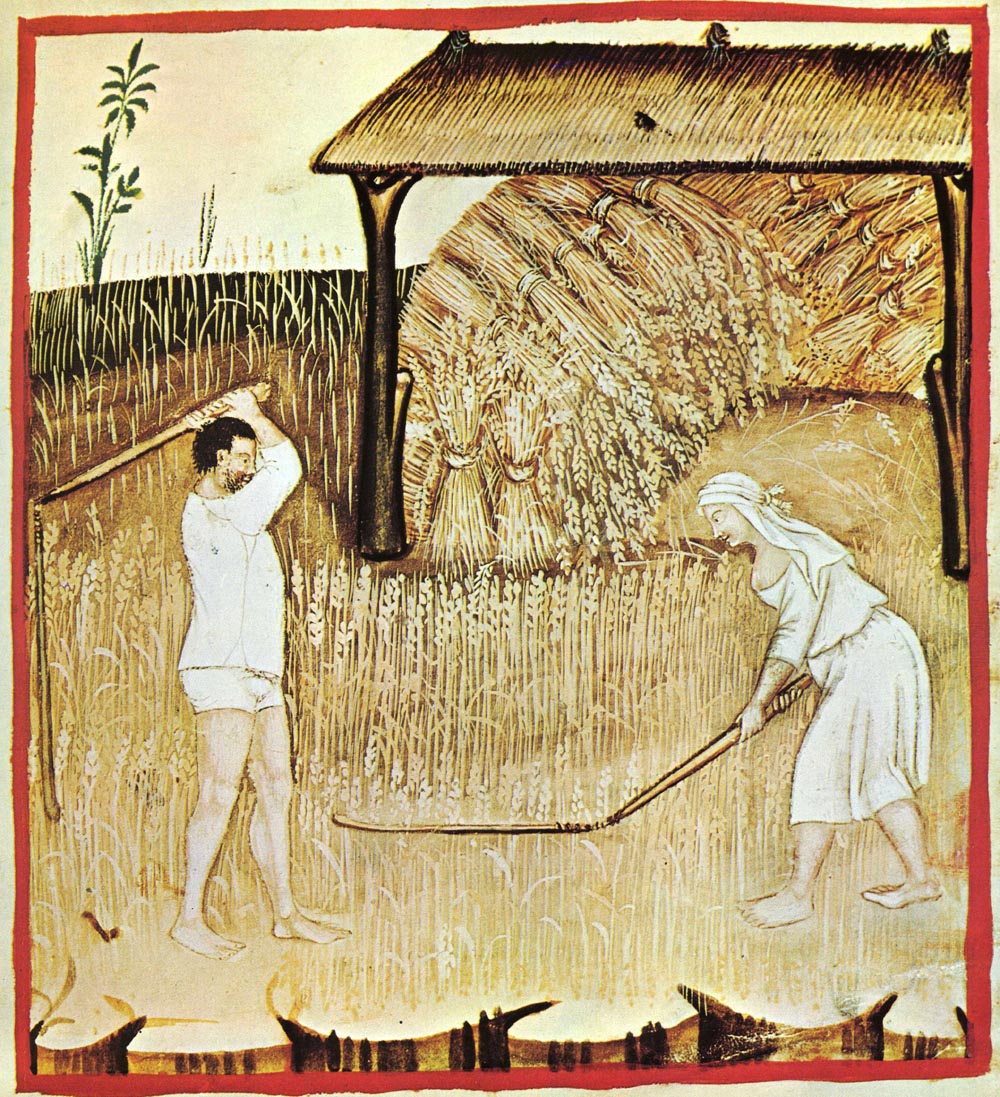 Those committed to growing these grains do it for more than just profit. Characteristic of the organic movement itself, this is a conscious quality of life choice. Being superior in flavor and nutritional value, these old grains are grown to suit and sustain their lives as well as their lands, things more valuable than just profit. This attitude, that seeks to know and pass on an artesian expertise inherent with this type of cultivation, is for the more resilient and humble of heart. Life and good health practices cannot be bought or compromised. They must be conscientiously cultivated and preserved as part of good-sense-heritage.
Those committed to growing these grains do it for more than just profit. Characteristic of the organic movement itself, this is a conscious quality of life choice. Being superior in flavor and nutritional value, these old grains are grown to suit and sustain their lives as well as their lands, things more valuable than just profit. This attitude, that seeks to know and pass on an artesian expertise inherent with this type of cultivation, is for the more resilient and humble of heart. Life and good health practices cannot be bought or compromised. They must be conscientiously cultivated and preserved as part of good-sense-heritage.
It would seem that the very fine flavors of these ancient grains suited the hearts, minds and palates of the more humble rural people all over Europe and the Mediterranean, as the task of preserving them intact over many thousands of years had fallen to them. The word “korn” literally means grain in German; Einkorn meaning “one grain.” The domesticated form of Einkorn – Triticum monococcum has not strayed very far from its wild form – Triticum boeoticum. Never having been hybridized, it remains the purest species of wheat available.
Typical of wild grasses, Einkorn thrives well on poor soils where other types of wheat will not, making it well suited to Southern Italian, Middle Eastern and North African agriculture. It is also grown in Germany, France and Britain as well as Australia. Italy has been continuously cultivating these grains for thousands of years, artfully using them in cuisine. These are among the most ancient wheat species continuously cultivated in the Mediterranean region and remain a staple in the southern regions of Italy.[5]
Einkorn predates all other wheat types. Emmer by comparison was believed to have been hybridized from two other wild gasses about 2000 years later. Spelt came much later. In Italy, these grains are colloquially known as farro, and deeply rooted in Italian tradition. It is interesting to note that the word “farro” is found no where else in the West but in Italy, likely from Roman times. Although Emmer is regarded as the true farro, the term is used rather loosely among the common folk to reference Einkorn and Spelt as well. In the Italian lands that still cultivate and eat these grains, they are simply distinguished by their size as farro medio, farro piccolo and farro grande respectively.
Blessed by having been ignored for not being adaptable to the softer forms of modern, less nutritious spongier, less healthy baked goods, these grains are surprisingly very filling, satisfying and tasty.Einkorn and Emmer are grown mainly because of their excellent food value and flavor whether cooked as simple porridge or more elaborate stews, made into pasta or baked into a dense bread. While spelt has been filling a health food niche demand for many decades in North America, Einkorn and Emmer are relative new comers to this market. Their simplicity in chromosomal structure also makes them ideal for the so-called homeopathic diet as defined by Jakob Lorber and Samuel Hahnemann.
From lack of hybridization, Einkorn has the simplest genetic structure of any wheat. Having only two sets of chromosomes in the nucleus of its cells, like other unmodified plants, it is a diploid. Emmer, from having been crossed with another species of grass carries four sets of chromosomes and is tetraploid, while Spelt having been hybridized still further, is hexaploid, having six sets of chromosomes; more chromosomes generally indicating more stages of hybridization. All wheat varieties have gluten, each acquiring complexity with higher chromosomal count. In wheat, more chromosomes means that the grain is softer and higher in gluten. This is where the health issues with wheat start.
High gluten wheat makes baking very easy as its “glue” like quality makes it more elastic and amenable to leavening and holding its shape; a great thing if that is what you are after. However, when you mix that type of wheat flour with water you also have an excellent, thick glue that was commonly used to hang wall paper or make Papier Mâché. If our body is made up of roughly 55-60% water, if eaten, what will this type of wheat do to the consistency of those waters and what effect will that have on the ability of the body to distribute and filter it? Flesh and the internal organs are all rather porous. Added chemicals aside, what would happen to them if a thickening agent like gluten were introduced into the body waters in combination with all other body chemistry and functions? This might be further suggestive of why high gluten wheat creates some of the health issues it is known for, affecting everyone by degree. This alone is reason enough to consider grains like Einkorn.
The newest concerns about wheat center around gluten intolerance; a growing health concern that the consensus of experts link to gluten types found in hybridized wheat;[7] more specifically, those having the “D” genome found in highly hybridized hexaploid wheats. Foods tested for potential gluten intolerance, specifically test for this “D” genome. Here is a more detailed explanation:
“Attempts have been made to quantify the toxicity of a range of bread wheat and pasta wheat varieties and of species that contain only one of the three genomes of bread wheat. Using specific T-cell clones and monoclonal antibodies, the results demonstrated that large quantitative differences exist in the presence of toxic gluten peptides, with some cultivars completely lacking particular harmful peptides. Diploid wheat species are among the suitable candidates for their low capability to activate intestinal T cell responses in celiac patients. Compared with tetraploid and hexaploid wheat, commonly used in the making of bread and pasta, the ancient diploid Triticum monococcum ssp. monococcum wheat (Einkorn) showed a marked reduction, or even a lack, of toxicity in vitro cellular assays. Gianfrani et al. compared the immunological properties of 2 lines of diploid monococcum wheat, Monlis and ID331, with those of T. aestivum. They found that both lines activate celiac T cell response. However, ID331 was less effective to activate the innate immune pathways. The reduced ability of some diploid wheat lines to in vitro activate the innate immune response in celiac mucosa could render these cultivars less active in inducing celiac disease. However, more analyses are required to explore their potential use as new dietary opportunities for celiac patients.”[8] These findings await FDA evaluation.
Although, there is a need to be cautious about drawing hard and fast conclusions, laboratory tested analysis like this strongly support the general hypothesis of the benefits of Einkorn above and beyond it’s being flavorful and filling. Simplicity is indeed powerful!
Einkorn, as the “mother wheat” and the simplest, non-hybridized diploid variety shows more promise to those suffering from gluten intolerance from the D genome being absent in Einkorn and its gluten when tested. This is why it is being recommended cautiously to those with gluten intolerance issues from conventionally grown wheat.[9]
Nutritionally, as shown in the chart below, compared to other types of wheat, Einkorn consistently contains more of the essential nutrients one would expect to find in them.
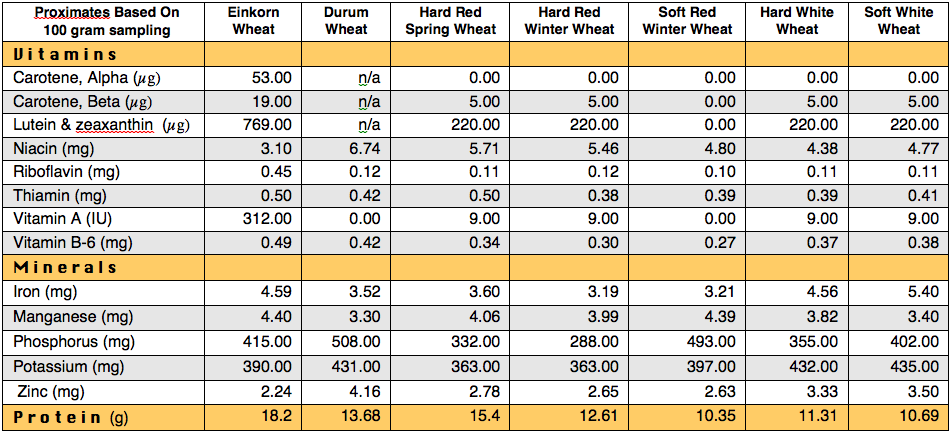 [10] Unlike conventional wheat, Einkorn retains most of its nutritive value during processing. Einkorn has high naturally occurring levels of Thiamin, iron, B vitamins, essential trace minerals and fiber. As is evident in the chart, it also sports higher protein tocols (vitamin E), carotenoids and Vitamin A, Lutein and Zeazanthin than other wheat species. Doing more with less, Einkorn maintains its high nutritive density within, and likely because of its simpler genetic make up.
[10] Unlike conventional wheat, Einkorn retains most of its nutritive value during processing. Einkorn has high naturally occurring levels of Thiamin, iron, B vitamins, essential trace minerals and fiber. As is evident in the chart, it also sports higher protein tocols (vitamin E), carotenoids and Vitamin A, Lutein and Zeazanthin than other wheat species. Doing more with less, Einkorn maintains its high nutritive density within, and likely because of its simpler genetic make up.
Although, oxygen is essential to life, oxidation can also destroy life. In terms of nutrition, an antioxidant is anything that will strengthen a cell against being oxidized. Einkorn in providing all of its whole nutrients has been noted to have a higher Oxygen Radical Absorbance Capacity (ORAC) than durum and bread wheat, meaning that it is generally more strengthening to the life of cells, keeping them healthy and strong.
 [11] This table shows comparative values of antioxidant free-radical scavenging activity of Einkorn versus other whole grain flours.
[11] This table shows comparative values of antioxidant free-radical scavenging activity of Einkorn versus other whole grain flours.
So, there you have it. Einkorn, being comparatively more nutritious, having a much simpler genetic structure from having been left as nature had intended it to be seems to be showing itself as generally beneficial, less problematic and tastier than other wheat varieties.
Baking with Einkorn is like cooking with old fashioned grains
They fill the room with their aroma and are full of flavor. Those old enough to remember what real food actually tasted like, when trying Einkorn have stated that; “Einkorn tasted as real as they remembered food to have once been.”[6] Some have stated that even while it was being boiled to be eaten like rice, it gives off the familiar rich aroma of baking bread.
Both the Einkorn berries and flour are commercially available. Having a small mill to grind Einkorn berries into fresh flour for baking is a good idea if you intend to use it frequently in food preparation. Naturally, if a person has been used to baking with regular wheat flour, some adjustments will need to be made to get similar results. The effort will certainly be worth it!
Einkorn may not be the pastry chefs choice for fine baking but, like anything, the only limit is the imagination. Einkorn was used way back in Ancient Roman times to bake bread. They called it “confarreatio;” (perhaps the origin of the colloquial Italian term “farro”) a more festive bread used for various celebratory occasions. As there was no refined sugar in those times, honey and milk were used in its baking. Taken a step further, on the left is a traditional Neapolitan cake baked with Einkorn flour and ricotta cheese called “pastiera.” It almost looks like a pie. But, as pies are not that popular in continental Europe, it would have to have a special quality that would favor it over fine pastry or a cake for the special occasions it is typically prepared for.
We keep hearing that those in the past were always living on the edge and close to starvation. At times many cultures have found themselves on the brink but, in Roman times, nothing could be further from the truth. At least 70% of the calories consumed by the Romans were made up grains and legumes. [12]The grains consisted mainly of Einkorn, Emmer, spelt and even a variety of common wheat. This was the diet that fueled the Roman conquering of most of Europe, the Middle East and North Africa. Roman soldiers would chow down on puls; the Biblical food of Daniel. Puls is a fresh thick soup, gruel or stew made from boiled grains, vegetables, spiced to taste, with meat or fish added when available. Julius Caesar’s armies marched with it. It might be a little presumptuous to say that Einkorn was the fuel of the Romans but, who’s to argue with their thousand years of success, sharp whits, ingenuity, orderliness and clear headed fortitude.
Puls resembled polenta or risotto which were likely adaptations that came much later with the coming of corn (maise) from the Americas and the cultivations of rice to the Italian peninsula.
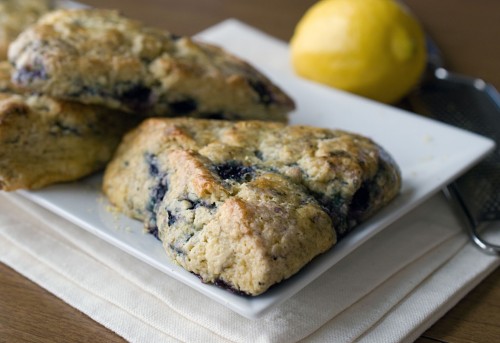 Would you believe: Einkorn Lemon Blueberry Scones – For the recipe just click on the scone image. You’ll be very glad you did!
Would you believe: Einkorn Lemon Blueberry Scones – For the recipe just click on the scone image. You’ll be very glad you did!
Never let anyone talk you into thinking that because it’s Einkorn that it has to be hard to work with! Certainly, if it was the main wheat used in the past, you can be sure that people used it creatively to do almost all we now do with modern day regular soft wheat; within reasonable limits of course. Otherwise, the scones in this picture would not be possible with Einkorn.
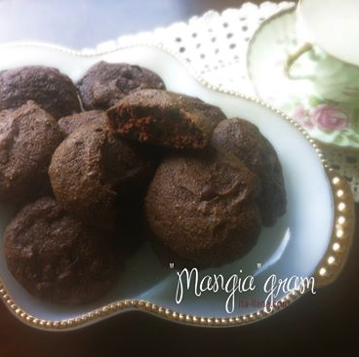 These healthy and delicious little Einkorn creations have come courtesy of Ita-liana.com and are called ‘Mostaciolli.‘ – A sort of Italian take on Brownies, only much healthier and made with Einkorn. You will find the complete recipe here. Which goes to show that we are only limited by our imagination!
These healthy and delicious little Einkorn creations have come courtesy of Ita-liana.com and are called ‘Mostaciolli.‘ – A sort of Italian take on Brownies, only much healthier and made with Einkorn. You will find the complete recipe here. Which goes to show that we are only limited by our imagination!
For reasons already mentioned, when you buy Einkorn, in any form, expect to have to pay a little more for it. Because of it, vendors will offer volume discounts to make it more comparable price wise to regular flour. That said, because it is so much hardier than regular wheat, you may find yourself eating less of it at a sitting. So, it tends to even out in actual cost.
You will find Einkorn berries and flours from both North American growers and Italian growers. What is interesting is that, although Einkorn in general is much a better grain than standard wheat in may ways, according to some who have actually compared the different available types, the variety of Einkorn being grown in North America is a little less agreeable to the digestive process than the Italian variety. Some have noted that the Italian grown sources produce a better tasting and more easily digested product and that the prices are sometimes even cheaper than those from North America; a strange oddity, but still worth every penny!!
As of the writing of this article those wishing to buy einkorn can indeed buy it from the links provided. However, those living in Canada may find it best to source Canadian vendors. In the next few months Aurora Importing, located in Mississauga Ontario, Canada will be importing the Italian variety of einkorn to be made available to the Canadian market.
Written by Amadeus G.
Resources:
1. G.F. Chappell II, Extension Agent, ANR, Crop and Soil Science. Stored-Grain Insect Pest Management. Field Crops 2002.
2.Price, Weston. D.D.S. Nutrition and Physical Degeneration. Keats Publishing. 1997.
3. The Bread and Flour Regulations 1998 (as amended), Food Standards Agency, UK, p. 6, retrieved December 28, 2012.
4. http://www.thenewsherald.com/articles/2013/05/13/life/doc518d2939c998c506593161.txt?viewmode=fullstory
5. Padulosi,S. ; Hammer,K.; Heller,J.(1996): Hulled wheats. 1995
6. http://jovialfoods.com/einkorn.html
7. http://www.thenewsherald.com/articles/2013/05/13/life/doc518d2939c998c506593161.txt?viewmode=default
8. Isabel Comino, María de Lourdes Moreno, Ana Real, Alfonso Rodríguez-Herrera, Francisco Barro and Carolina Sousa; The Gluten-Free Diet: Testing Alternative Cereals Tolerated by Celiac Patients – nutrients ISSN 2072-6643
www.mdpi.com/journal/nutrients
9. Pizzuti, D.; Buda, A.; d’Odorico, A.; d’Incà, R.; Chiarelli, S.; Curioni, A.; Martines, D. (2006). “Lack of intestinal mucosal toxicity of Triticum monococcum in celiac disease patients”. Scandinavian Journal of Gastroenterology 41 (11): 1305–1311
10. Einkorn.com
11. Jovialfoods.com
12. Food and Dining in the Roman Empire

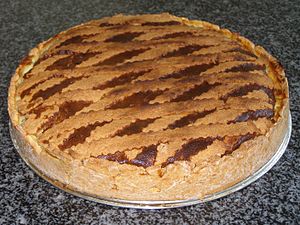
Pingback: Einkorn: The Original Wheat | Amalux Blog
Thank you so much for this very informative article regarding Einkorn. I have been learning to bake with it now exclusively and there is very little information about adapting it to “wheat” recipes. I have bought N. American einkorn berries and Jovial’s and I like the Italian product better. So thanks again. Your article was a blessing.
Hello Elizabeth,
We love Einkorn and try to cook with it exclusively as it tastes great without making us feel the problems associated with wheat. We will be importing Einkorn directly from Italy in the next few weeks. We will be shipping out of Canada. We will be providing the Monlis variety of Einkorn. This is a non-hybridized variety that has thankfully been been left the same as it was since Roman times. Our shipment arrives very soon and we are anxious to get it ready for market. We will email you when it arrives and will have a price list at that time. All the best!!
Pingback: The Modern Ancients | Aurora Importing and Distributing